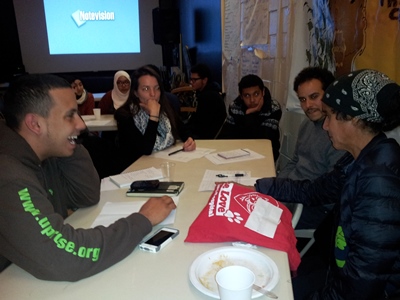UPROSE launches community center for climate justice

When Superstorm Sandy hit Brooklyn, the hardest hit communities were those in and around the waterfront, including Sunset Park and Red Hook, where the floodwaters not only damaged houses and businesses, but also exposed vulnerabilities in the existing street and building infrastructure, and in the lines of communication between neighbors and much-needed resources.
This freshly urgent need for a unifying and galvanizing force around environmental and public safety concerns is why UPROSE, also known as the United Puerto Rican Organization of Sunset Park, has now launched a Climate Justice Community Resiliency Center (CJCRC).
On Wednesday, November 13, UPROSE welcomed residents, students, community leaders and health professionals to their 22nd Street offices for an introduction to the CJCRC, its purpose, and how people can join in to create a healthier and stronger place to live.